What Is Chambray: Lightweight Fabric Uses And Denim Contrast
Ever noticed a shirt that looks a bit like denim but feels wonderfully light and soft, especially on a warm day? Chances are, you’ve met chambray! Chambray is a popular and super comfy fabric you see in lots of clothes.
In this simple guide, we’ll explore what makes chambray special, why people love it, how it’s different from its cousin denim, and all the cool things you can make with it. We’ll even talk about how to pick the perfect labels if you’re creating your own chambray items! Understanding chambray material and its uses will help you appreciate this versatile textile.
1. What is chambray fabric?
Chambray, at its heart, is usually a plain-woven cotton fabric. You’ll recognize it by its lightweight feel, its soft touch (often softer than new denim), and a unique ‘frosted’ or ‘heathered’ look to its color. Think of it like denim’s lighter, more breathable, and often gentler sibling.
The secret is in the weave:
- Plain weave: Chambray is made using a plain weave (the most basic way to weave fabric – it means one thread goes over one thread, then under the next, like a simple grid). This plain weave is what helps make chambray smooth, flat, and relatively lightweight compared to fabrics with more complex weaves.
- Color mix: To get its special look, chambray uses two different colored threads. The threads running lengthwise (these are called warp threads) are usually colored, most classically blue. The threads woven across (the weft threads) are typically white or unbleached.When these colored warp threads and white weft threads are woven together in that plain weave, it creates a speckled, almost muted color effect. You see hints of both the colored and white threads, giving it that signature ‘heathered’ or ‘frosted’ appearance. This is why it doesn’t look like a solid block of color. This is different from denim, where the colored threads are much more dominant on the outside of the fabric. Some very fine chambray can be described as a cambric-like fabric due to its smooth finish and light weight. The weave type is crucial to its characteristics, combining cotton fibers into this popular chambray fabric.
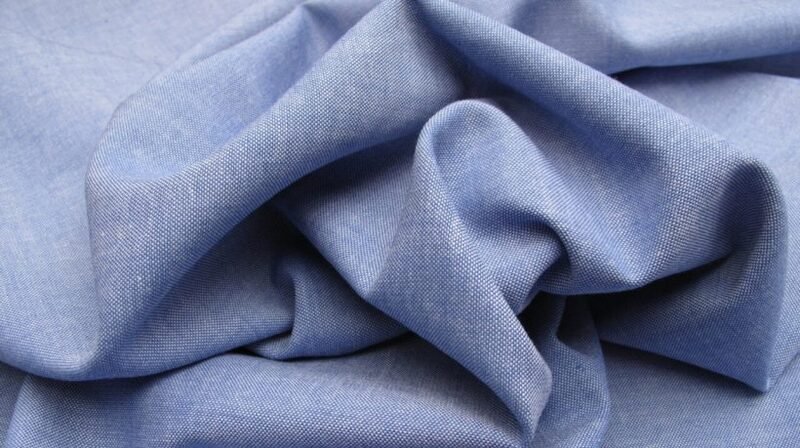
2. How is chambray made?
Making chambray is all about a straightforward weaving process. Imagine one set of threads (the colored warp threads) stretched out, and then another thread (the white weft thread) is woven over and under them, back and forth.
The magic happens because the warp threads are one color (often blue) and the weft thread is another (usually white). This specific combination of cotton threads, woven together simply, is what gives chambray its unique, slightly mottled look right from the loom.
3. Key features of chambray
Chambray isn’t just another fabric; it has some truly great qualities that make it a favorite. Here’s why people love it:
3.1 Super lightweight
One of chambray’s most defining characteristics is that it’s incredibly lightweight. Unlike heavier fabrics, it feels airy and doesn’t weigh you down, making it an ideal choice for warm-weather clothing. This quality also makes it perfect for layering without adding uncomfortable bulk.
3.2 Lets your skin breathe
Thanks to its plain weave and (usually) cotton fibers, chambray is highly breathable. Air circulates easily through the fabric, which helps moisture like sweat evaporate from your skin. This prevents that sticky feeling on hot days and keeps you feeling cool and comfortable.
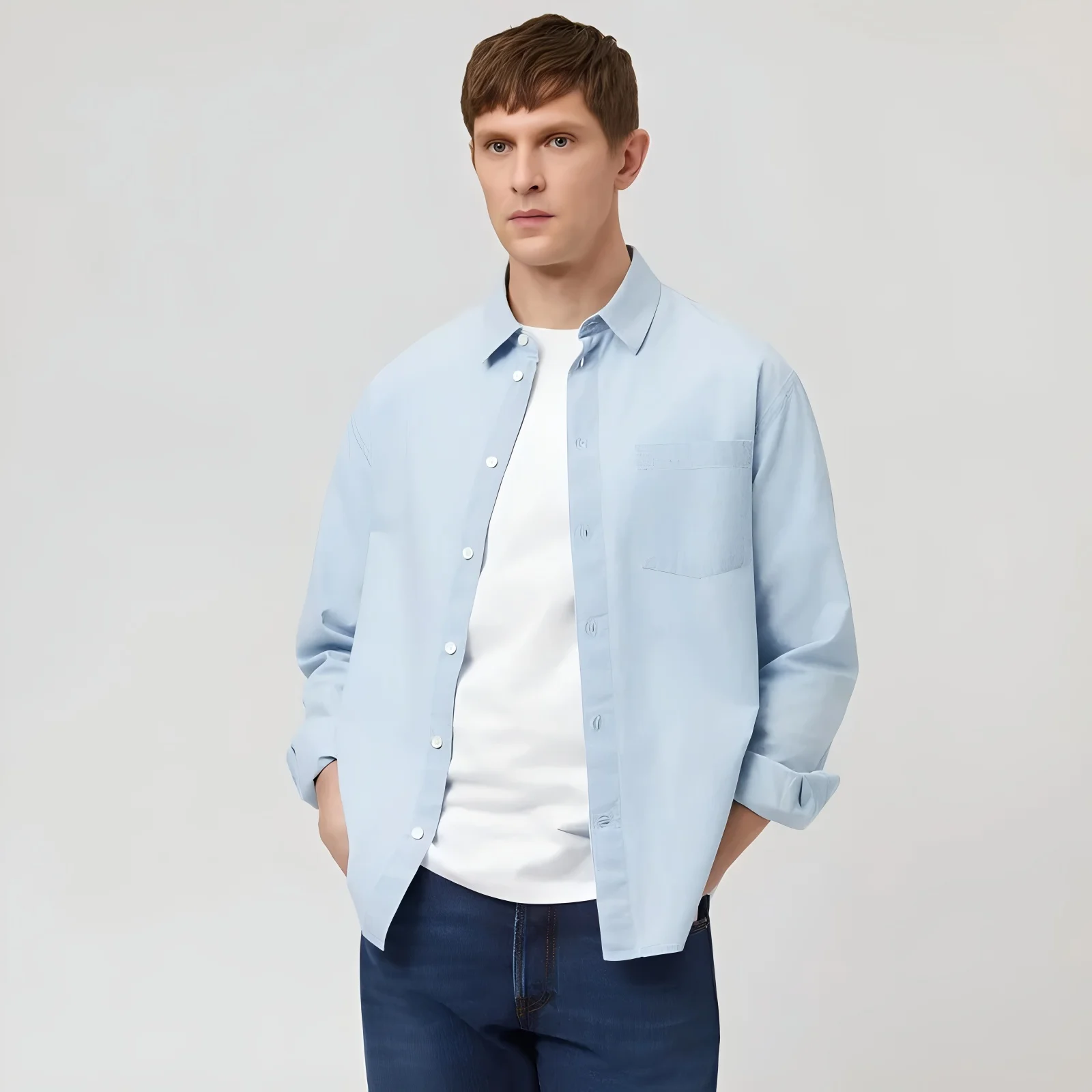
3.3 Feels soft
Chambray is soft to the touch, often much gentler than new, stiff denim. This inherent softness makes it incredibly pleasant to wear directly against the skin all day long. It’s an excellent option for those with sensitive skin as it’s less likely to cause rubbing or chafing.
3.4 Durable
Don’t let its lightweight feel fool you—quality chambray is surprisingly durable. Its simple yet stable plain weave gives the fabric strength. This means that with proper care, your chambray garments can withstand regular wear and last for many seasons, making them a worthwhile addition to your wardrobe.
3.5 Versatile appearance
The unique blend of colored and white threads gives chambray a distinctive “heathered” or “frosted” appearance. This subtle texture adds visual interest without being loud, creating a relaxed yet polished charm that is incredibly versatile. It can be dressed down for a casual weekend or styled up for a smart-casual setting.
3.6 Easy to style
Chambray’s versatility extends to the sheer range of garments it’s used for. From classic shirts and dresses to pants and kids’ wear, chambray pieces act like wardrobe chameleons. They integrate effortlessly into various fashion styles, from laid-back beachy looks to more structured, office-appropriate outfits.
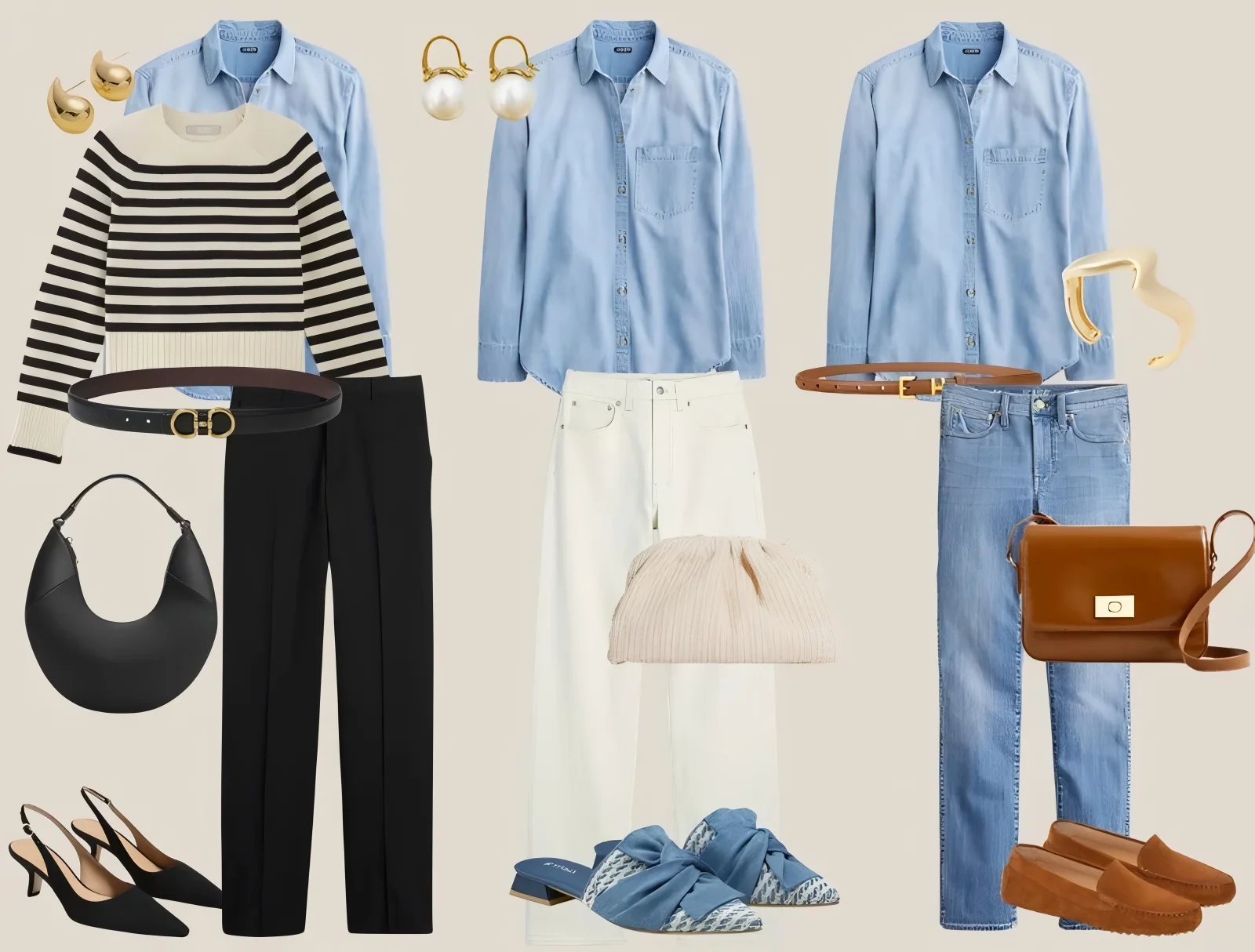
4. Chambray vs. denim: Telling them apart
Many people see a blue fabric and immediately think denim, but chambray, while often blue, is quite different. Let’s clear up the confusion!
4.1 How they are woven
- Chambray: As we learned, chambray uses a plain weave – a simple one-over, one-under pattern. This gives it a flat, smooth surface.
- Denim: On the other hand, denim uses a twill weave. This is a stronger weave where the weft thread passes over two or more warp threads, creating a pattern of diagonal parallel ribs. You can often see these tiny diagonal lines on your jeans.
- Analogy: Imagine chambray’s surface is smooth like a bedsheet, while denim’s surface has those subtle diagonal ridges.
4.2 Weight and thickness
- Chambray: Chambray is almost always lighter in weight and thinner than denim.
- Denim: Denim is generally heavier, thicker, and more rugged.
4.3 How they feel
- Chambray: Chambray typically feels softer and more pliable right from the start. It drapes more easily.
- Denim: Denim, especially when new, can be quite stiff and needs to be ‘broken in.’ It has a tougher, more robust feel.
4.4 How the color looks
- Chambray: In chambray, the colored warp threads and white weft threads are more evenly mixed and visible on both sides of the fabric. This gives it that ‘frosted’ or heathered look throughout. The front and back of chambray fabric often look very similar.
- Denim: With denim, the colored warp threads (usually indigo) are more dominant on the face (outside) of the fabric, making it look more solidly colored. The reverse side (inside) of denim is often significantly lighter because the white/undyed weft threads are more visible there. (Think of the inside of your blue jeans).
4.5 When to pick chambray or denim
- Chambray is best for: Lighter shirts (for men, women, and kids), summer dresses and skirts, blouses, soft baby clothes, lightweight pants, and any garment where you want breathability, softness, and a relaxed drape.
- Denim is best for: Traditional jeans, sturdy workwear, durable jackets, overalls, and items that need to withstand a lot of wear and tear and require maximum toughness.
Here’s a quick summary:
| Feature | Chambray | Denim |
|---|---|---|
| Weave | Plain weave (smooth, flat) | Twill weave (diagonal ribs) |
| Weight | Lighter | Heavier |
| Feel | Softer, more pliable | Stiffer (when new), tougher |
| Color (Face) | Heathered/frosted (mixed) | More solid color (warp dominant) |
| Color (Reverse) | Similar to face | Often much lighter (weft dominant) |
| Best For | Light shirts, dresses, comfort | Jeans, workwear, durability |
5. What can you make with chambray?
Chambray’s versatility makes it suitable for a wide range of items. It’s a popular choice in the apparel industry and for textiles for apparel due to its comfort. When apparel designers choose chambray for comfort, they know it’s a winner.
5.1 Great for clothes
- Shirts: The classic chambray shirt is a wardrobe staple for everyone – men, women, and kids. They can be casual button-downs, relaxed-fit tops, or even slightly dressier blouses.
- Dresses and Skirts: Its light and often flowy nature makes chambray perfect for comfortable summer dresses, tunics, and skirts.
- Light Jackets & Shackets: Think light spring or fall jackets, or ‘shackets’ (shirt-jackets) that are great for layering.
- Kids’ Clothes: Chambray is a fantastic choice for children’s clothing – rompers, overalls, little dresses, and shirts – because it’s soft, breathable, and durable enough for play.
- Pants and Shorts: For a lighter alternative to denim jeans or heavy cotton trousers, chambray pants, culottes, and shorts are ideal, especially in warmer months.
- Other Apparel: You’ll also find it used for pajamas, jumpsuits, and even light robes.
5.2 More than just clothes
- Home Decor: Chambray can bring a relaxed, fresh feel to your home. Think simple, light bed linens like sheets and duvet covers, airy curtains, casual tablecloths, and napkins.
- Accessories: It’s also used for soft accessories like lightweight tote bags, bandanas, summer scarves, and even fabric hats or cap linings.
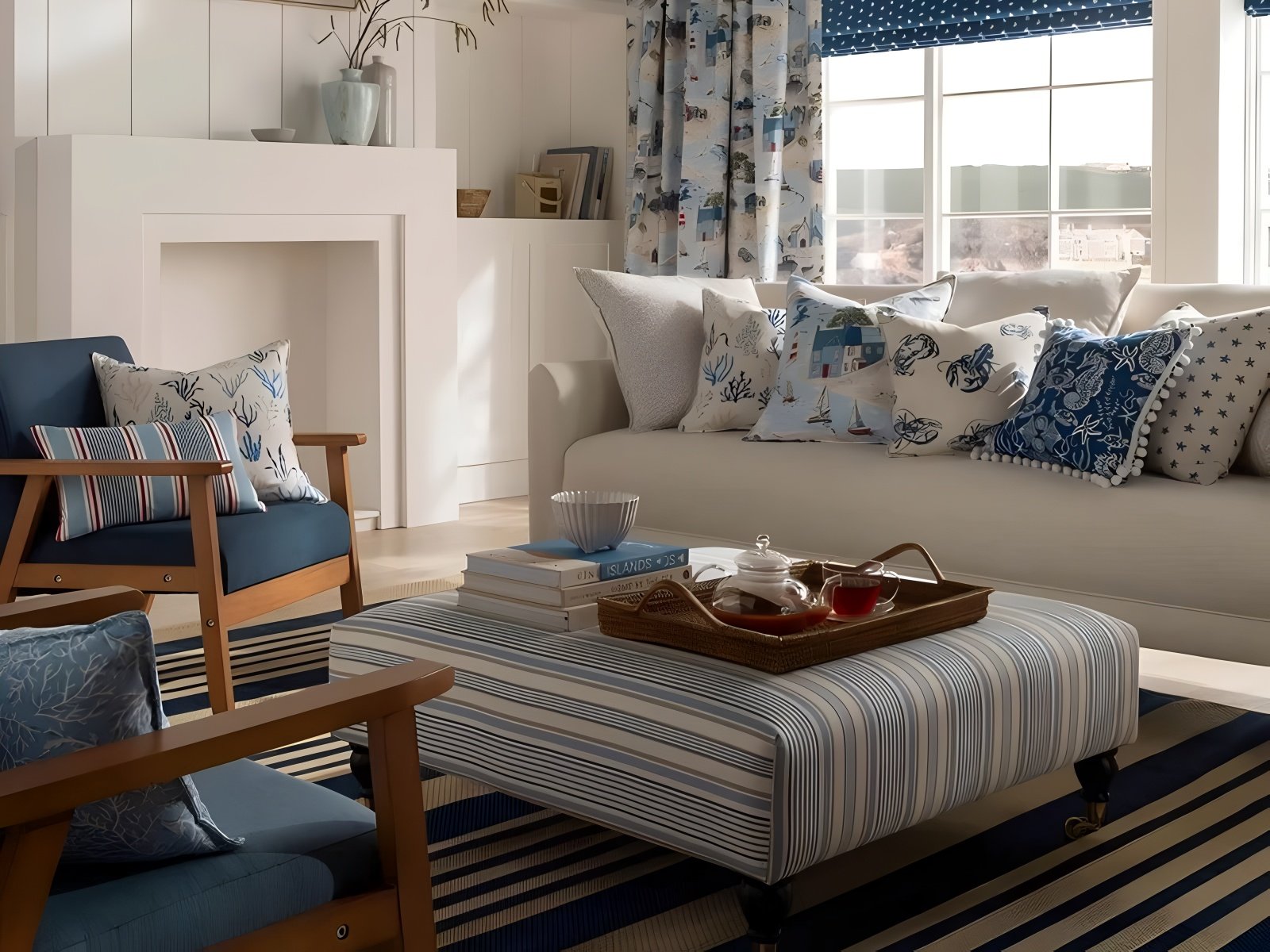
6. How to care for your chambray stuff
Good news! Chambray is generally pretty easy to take care of. Following guidelines for caring for cotton and chambray garments will keep them looking their best.
6.1 Washing
- Most important tip: Always, always check the care label on the garment first! This label has specific instructions from the maker and is your best guide.
- General Advice: For most 100% cotton chambray, machine wash in cool or lukewarm water. Hot water can sometimes cause more shrinkage or fading.
- Colors: Wash with similar colors, especially for new, darker chambray items, as they might release a little dye in the first few washes.
6.2 Drying
- Machine Drying: You can often tumble dry chambray on a low heat setting. Remove it promptly to reduce wrinkles.
- Best Option (to preserve fabric): For best results and to make your chambray last longer (and minimize any potential shrinkage), hang it to dry or lay it flat. This is gentler on the fibers.
6.3 Ironing
If your chambray gets wrinkled, it’s easiest to iron it while it’s still slightly damp. Use a medium heat setting (usually the ‘cotton’ setting on your iron).
6.4 Good to know (fading)
Like its cousin denim, 100% cotton chambray (especially darker blues) may fade a little bit over time and with many washes. Many people actually like this, as it gives the fabric a softer, more worn-in, vintage look!
7. Making chambray items look great
If you’re making or selling chambray clothing, the right labels and tags can make a big difference. They’re not just for show; they add value and communicate important info. These branding materials for clothing are essential.
- Branding: They showcase your brand name and logo, helping customers remember you.
- Information: They provide essential details like care instructions (so important for chambray!), fabric content (like ‘100% Cotton Chambray’ or ‘Organic Chambray’), and where it’s made.
- Professionalism & Value: Good quality custom apparel trims give your chambray items a professional, finished look, boosting how people see their quality and value.
7.2 What labels work well with chambray’s look and feel
Here are some tags for chambray clothing that we recommend:
Woven labels offer a classic, premium look and feel. They are durable and can have fine details. For chambray, softer woven labels are ideal.
Packlove Connection: We offer various custom woven labels, including high-definition (damask) options that are soft to the touch, or even labels made from cotton or recycled polyester. These choices beautifully complement chambray’s natural feel.
For example, a cotton woven label can enhance the organic, gentle touch of a chambray baby garment. Woven labels enhance branding on chambray shirts and other apparel.
Printed Cotton Labels:
If ultimate softness is key, especially for items worn right against the skin (like kids’ clothes, pajamas, or inner neck labels on shirts), printed cotton labels are fantastic. They are super soft, can display detailed graphics or lots of care information clearly, and blend seamlessly with the chambray fabric.
Hang tags are your chance to tell a bit more of your brand’s story. For chambray’s often rustic, natural, or casual vibe, materials like kraft paper or textured, uncoated cardstock work wonderfully.
Packlove provides a wide selection of hang tag materials, including eco-friendly kraft paper, recycled cardstock, and options for custom shapes and printing (like subtle embossing or debossing).
These can perfectly align with a chambray product line that emphasizes natural or sustainable qualities, making them some of the best branding tags for lightweight chambray apparel.
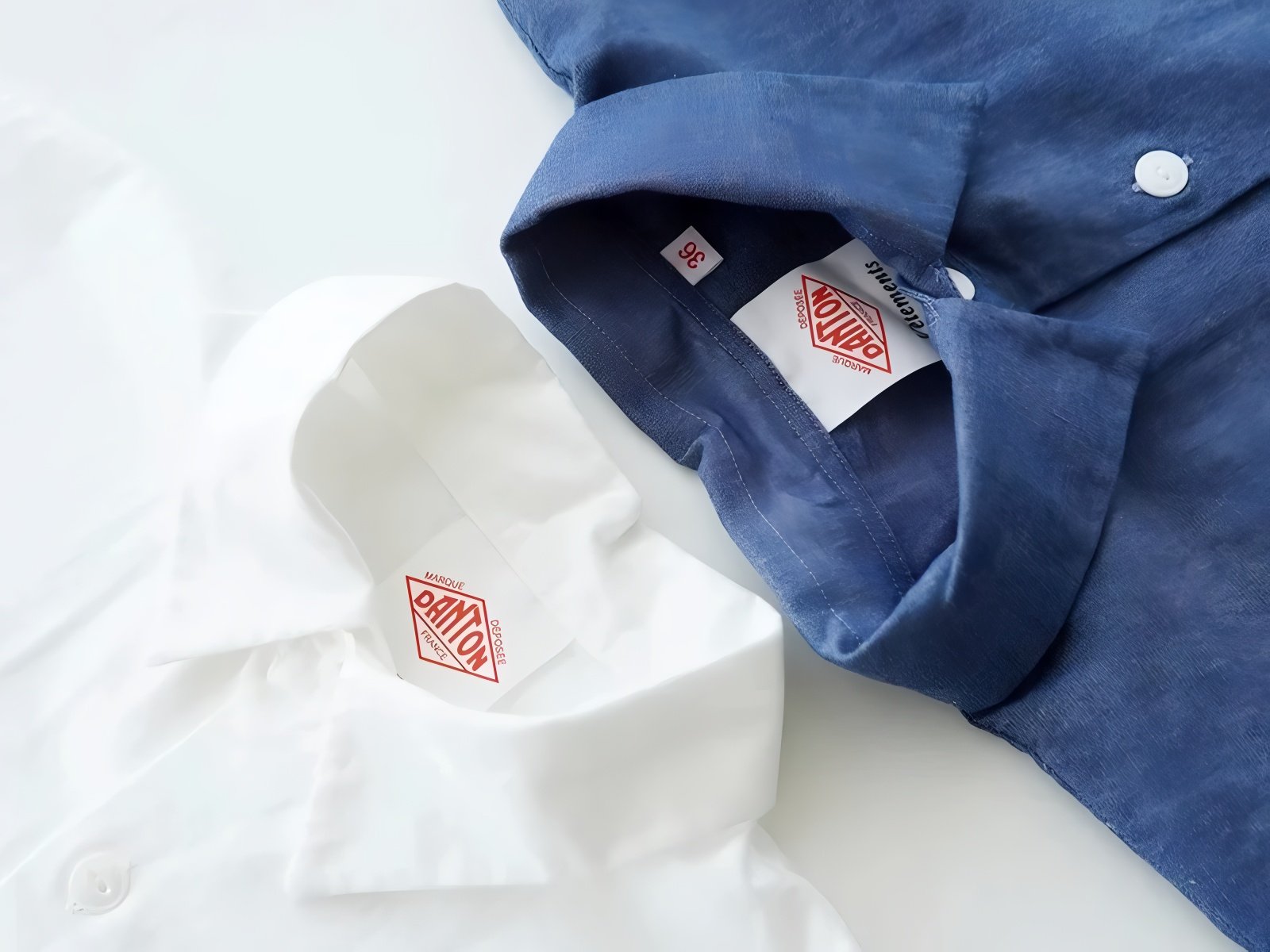
7.3 Things to think about for labels on chambray
- Softness is key: Since chambray itself is loved for its softness, make sure your chosen labels (especially neck labels) are not scratchy or stiff. Packlove can advise on the softest material options for your custom woven label.
- Attachment Method: For most chambray garments, sew-on labels are preferred for a classic look and good durability. Ensure the label attachment method (e.g., sew-on for labels on chambray) doesn’t pucker the lightweight chambray fabric.
8. Your chambray questions answered (FAQs)
Here are answers to some common questions about chambray:
8.1 Is chambray good for summer?
Yes, absolutely! Chambray is fantastic for summer. Because it’s lightweight, breathable (especially if it’s 100% cotton), it helps keep you cool and comfortable even when it’s hot. The cotton fibers also help absorb moisture.
8.2 Does chambray shrink?
Like many natural fabrics, especially 100% cotton, chambray can shrink a bit, particularly if washed in hot water or dried on high heat. Always check the garment’s care label first. To minimize shrinkage, wash in cool water and consider air drying or tumble drying on low.
8.3 Is chambray expensive?
Generally, chambray is quite affordable and offers good value. The price can vary depending on the quality of the cotton, the brand, and if it’s blended with other fibers like Tencel™ or linen. Chambray with Tencel/Linen blends can sometimes be a bit more. But basic cotton chambray is usually not expensive.
8.4 What’s the difference between chambray and oxford cloth?
They can look similar sometimes, but the main differences between chambray, denim, and oxford cloth are:
- Weave: Chambray has a plain weave (flat, smooth). Oxford cloth uses a basketweave, which often gives it a slightly more textured, pinpoint, or tiny checkerboard look and can feel a bit more substantial.
- Weight & Feel: Oxford cloth is typically heavier, thicker, and crisper than chambray. Chambray is generally softer and has more drape.
- Use: Chambray is often seen in more casual shirts and garments. Oxford cloth is very common for traditional button-down dress shirts and often has a bit more structure.
8.5 Can I get chambray in colors other than blue?
Answer: Yes! While blue is the classic and most common color for chambray (giving it that denim-like look), you can find chambray in a whole rainbow of other colors. Think reds, grays, greens, pinks, pastels, and even chambray with woven patterns like stripes or checks.
8.6 Is chambray an eco-friendly fabric?
It can be. Standard chambray made from conventional cotton is a natural fiber, which is a good start. For a more eco-friendly choice and one of the good sustainable fabric choices for apparel, look for Organic Chambray.
This means it’s made from organic cotton, which is grown without synthetic pesticides and fertilizers. You might also find chambray blended with other sustainable fibers like Tencel™ (lyocell) or recycled cotton. These are all great steps towards more sustainable fashion!
Explore more:
We hope this guide helped you understand all about chambray! It’s a fantastic fabric with so much to offer.
Ready to give your chambray creations the perfect finishing touch? Explore Packlove’s range of custom woven labels, soft printed cotton labels, and eco-friendly hang tags designed to complement your apparel.
Still have questions about choosing the right labels for chambray or other fabrics? Our friendly team at Packlove is here to help! Contact us for expert advice.






















